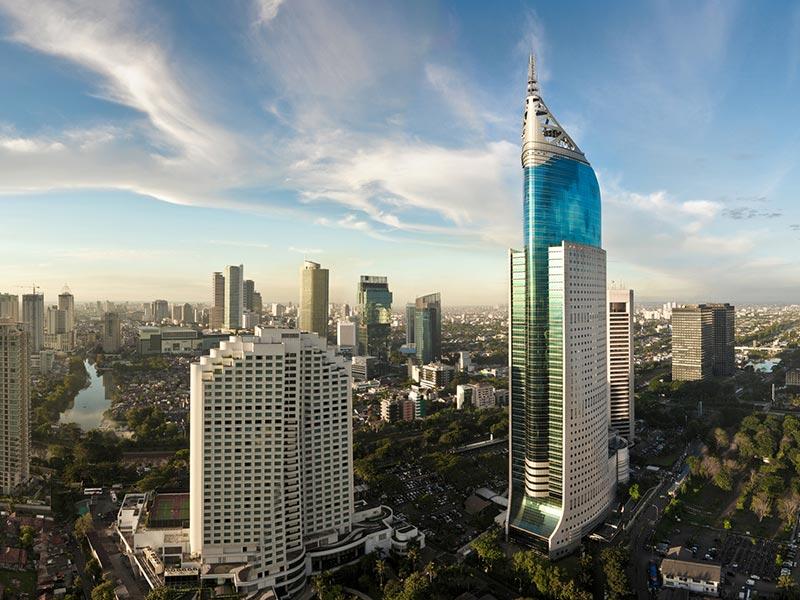Sustainable Business in Asia: Three Environmental Drivers of the Decisive Decade

By: Jeremy Prepscius, Vice President, Asia-Pacific, BSR
Climate change is a global threat, endangering communities, resources, and economies around the world. For businesses in particular, climate change is a significant risk—to workers, operations, and supply chains. Many companies are already mobilizing: to limit their own impact, many are setting emissions reduction targets; to adapt to the growing risks, some are evaluating where their supply chains are located as well as what energy sources they use.
Companies with operations in Asia will face a unique set of challenges and opportunities as we enter the decisive decade of the 2020s. BSR has identified the following trends relating to climate and the environment that are likely to impact how companies do business in the region. We have identified these trends based on our work with companies in Asia, including our engagement with stakeholders throughout the region.
We expect these trends to impact sourcing strategies and supply chains, access to finance, employee engagement, sustainability leadership, and increasingly market and consumer engagement. For sustainable business to thrive in the next decade, companies need to be aware of:
1. The Increased Focus on Climate and Sustainability Determining Access to FinanceClimate change impacts and risks—such as rising sea levels, increasing cyclone intensity, water stress, and drought—pose a significant threat to Asia. China alone has 14 coastal cities and 154 million people in low-elevation zones. Indonesia has the world’s second largest coastline, exposing 60 percent of its population to sea-level risk and coastal surge; furthermore, Jakarta, its capital, is sinking.
Climate risks, impacts, and the need for planning and resilience are being integrated into banking risk, banking relationships, and the Task Force on Climate-related Financial Disclosures. This means that the increasing global focus on carbon and climate will impact key relationships between businesses and their financial services providers. As their bankers begin to ask more pointed and specific questions, all businesses—including conglomerates and family-run businesses seeking access to global capital—will need to integrate deeper understanding of climate risks: from hazards such as flooding, to business exposures as demand for products/services change, to vulnerabilities of local infrastructure and communities. The financial imperative to understand climate risk is driving greater CFO engagement on climate and sustainability and will continue to do so. As a consequence, companies are having to develop greater firm-level competency, awareness, and integration of both climate and sustainability into their core business strategies.
2. China’s Continuing War on PollutionChina has been waging and will continue to wage three battles: for clean air, clean water, and clean land. As this continues over the coming decade and is further integrated into the 14th Five-Year Plan, the war on pollution will continue the changes already being driven: polluting enterprises are being shut down, moving, or needing to significantly invest in pollution control as governmental enforcement, standards, and local government oversight change. Supply chains are experiencing—and will continue to experience—the impacts of this war on pollution in terms of increased supply chain uncertainty and supply chain movement as critical China-based suppliers in tier two or three cease operations or move to new locations.
3. Differing Country Investments in Renewable EnergyIndividual countries’ choices to enable investments in renewables (or not) will be important to global supply chains and are highly variable around Asia—with Vietnam appearing to innovate and Indonesia at a crossroads where “an over-reliance on thermal coal and unsustainable sources…will lock the country into polluting energy supplies, for years, if not generations, to come.” Continued use of coal and other fossil fuels affects businesses’ Scope 3 carbon emissions—and most probably lock countries into higher energy costs over the course of the decade.
As global business begin to contemplate fossil fuel-free supply chains, energy generation options in countries will become increasingly important. Whether is it a carbon tax in the producing country or a carbon tax at the border to the market country, this needs to be accounted when looking at value chain locations. Local energy options and future energy infrastructure development plans will need to be on the radar of procurement and supply chain leadership.
| Country | Energy from Fossil Fuels (% of Total Installed Capacity) |
Installed Capacity (KW) |
| Japan | 71% | 295,900,000 |
| China | 62% | 1,653,000,000 |
| Vietnam | 56% | 40,770,000 |
| Indonesia | 85% | 61,430,000 |
| Bangladesh | 97% | 11,900,000 |
| Philippines | 67% | 22,130,000 |
Businesses already doing business in Asia or those with plans to expand operations and supply chains into the region need to pay attention to these trends as we move into the new decade. BSR’s Asia team can help develop strategies specific to the region to advance your company’s sustainability agenda—please feel free to reach out and connect with us.
Originally appeared on BSR.

